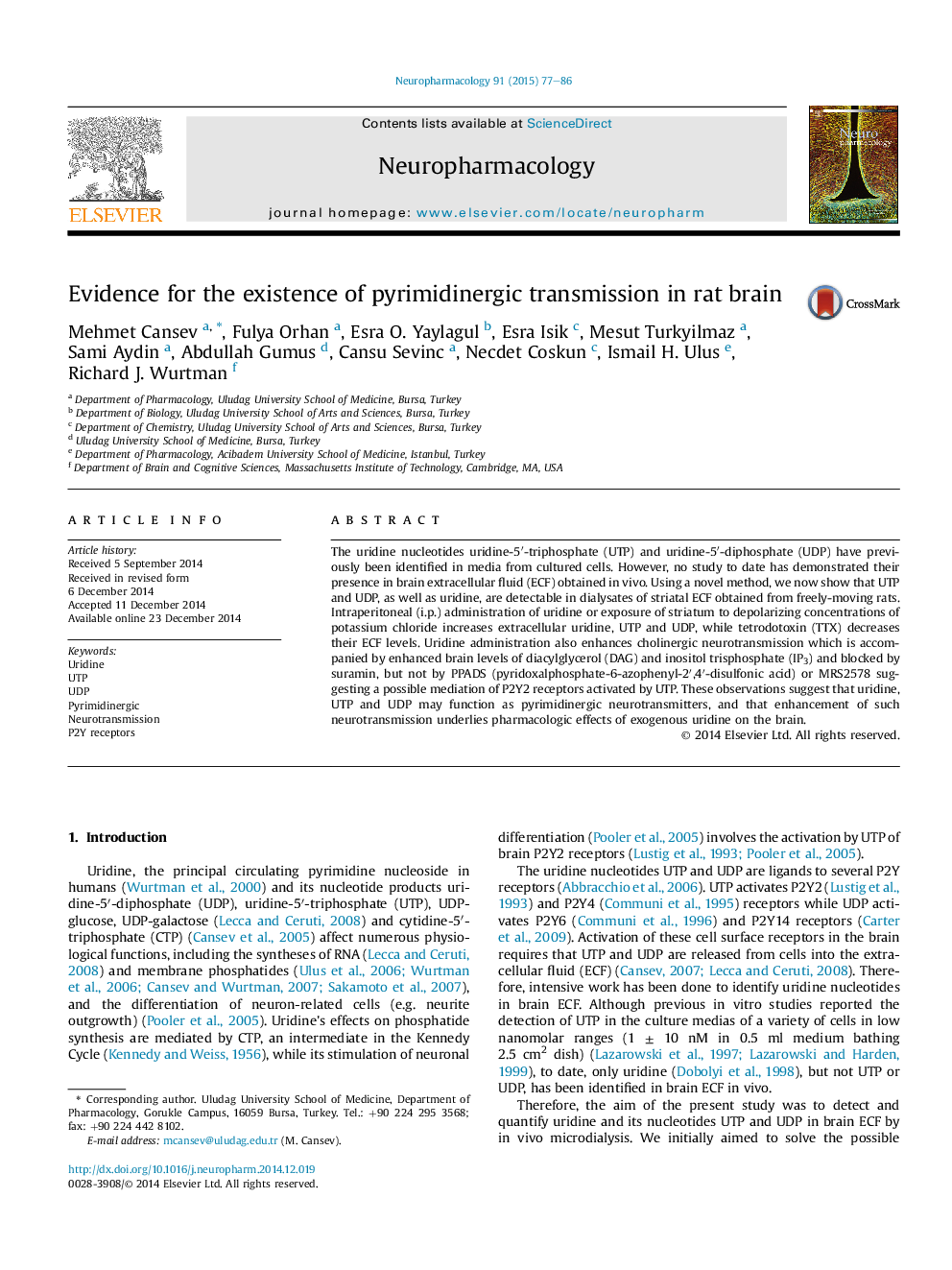| Article ID | Journal | Published Year | Pages | File Type |
|---|---|---|---|---|
| 5813915 | Neuropharmacology | 2015 | 10 Pages |
Abstract
The uridine nucleotides uridine-5â²-triphosphate (UTP) and uridine-5â²-diphosphate (UDP) have previously been identified in media from cultured cells. However, no study to date has demonstrated their presence in brain extracellular fluid (ECF) obtained in vivo. Using a novel method, we now show that UTP and UDP, as well as uridine, are detectable in dialysates of striatal ECF obtained from freely-moving rats. Intraperitoneal (i.p.) administration of uridine or exposure of striatum to depolarizing concentrations of potassium chloride increases extracellular uridine, UTP and UDP, while tetrodotoxin (TTX) decreases their ECF levels. Uridine administration also enhances cholinergic neurotransmission which is accompanied by enhanced brain levels of diacylglycerol (DAG) and inositol trisphosphate (IP3) and blocked by suramin, but not by PPADS (pyridoxalphosphate-6-azophenyl-2â²,4â²-disulfonic acid) or MRS2578 suggesting a possible mediation of P2Y2 receptors activated by UTP. These observations suggest that uridine, UTP and UDP may function as pyrimidinergic neurotransmitters, and that enhancement of such neurotransmission underlies pharmacologic effects of exogenous uridine on the brain.
Related Topics
Life Sciences
Neuroscience
Behavioral Neuroscience
Authors
Mehmet Cansev, Fulya Orhan, Esra O. Yaylagul, Esra Isik, Mesut Turkyilmaz, Sami Aydin, Abdullah Gumus, Cansu Sevinc, Necdet Coskun, Ismail H. Ulus, Richard J. Wurtman,
